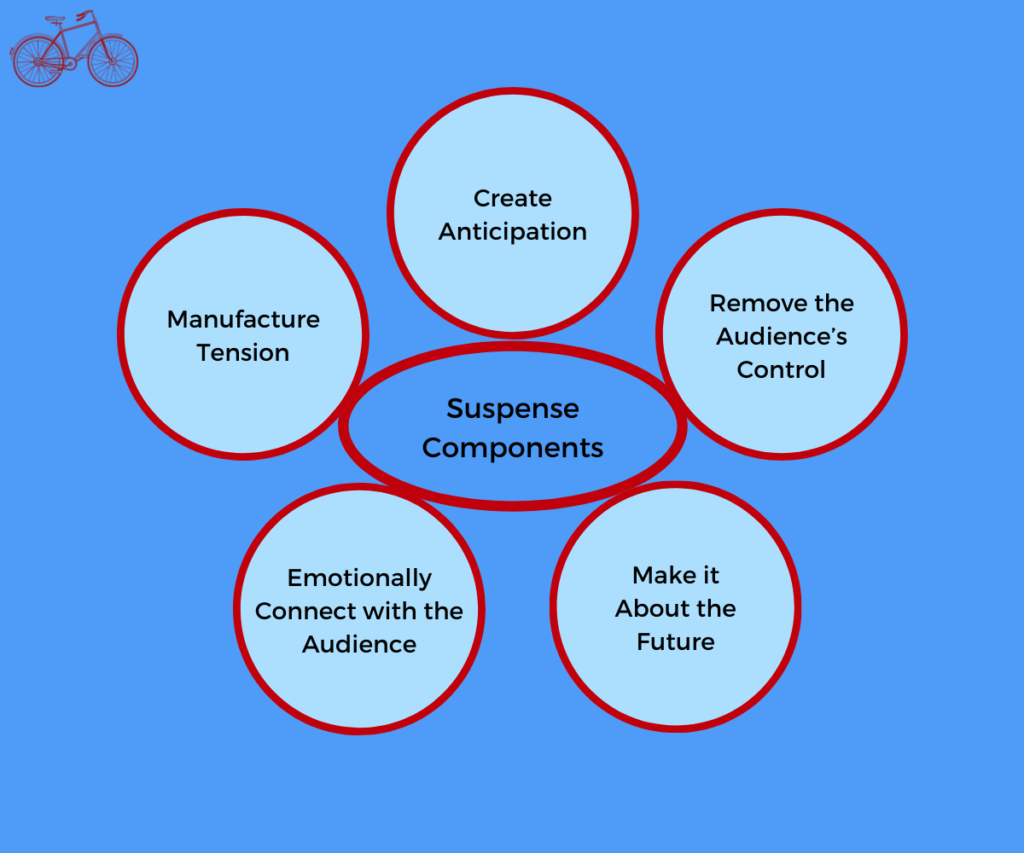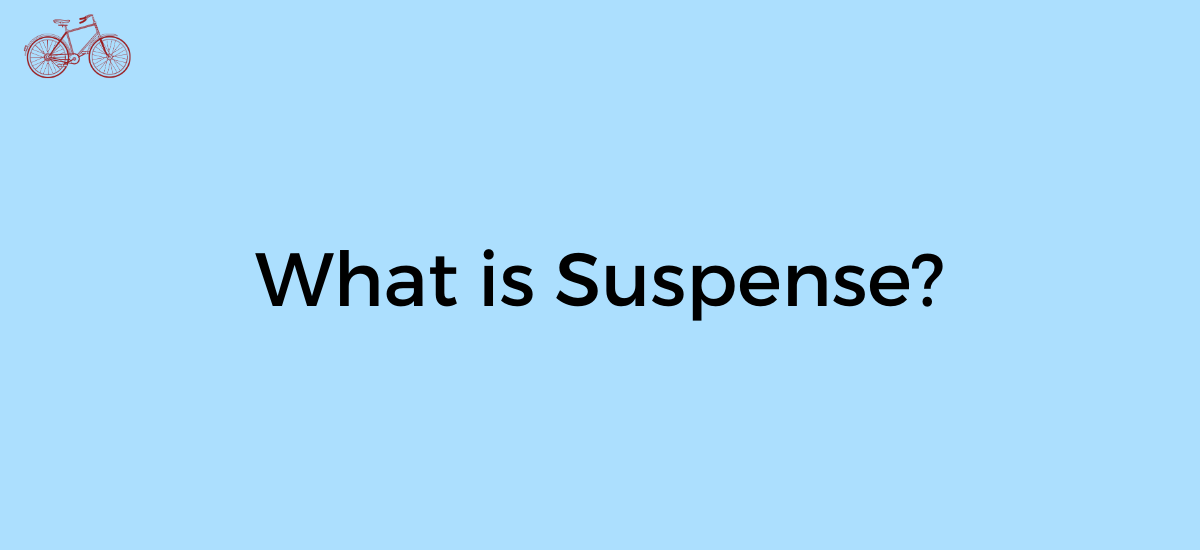Our minds hate uncertainty. That’s why suspense works.
Being glued to your seat. Reading a page turner. Anxiety about how the situation is going to unfold. These are all the result of a book, movie, or marketing campaign using suspense to keep you – as the audience – engaged.
As writers – or marketers – we want to understand how we can better use this strategy in our storytelling. To help with this understanding, we’ve put together what you need to know about suspense.
Read on to get the answer to the question, what is suspense?
What is Suspense?
Suspense is uncertainty.
It’s this uncertainty that leads to tension, anxiety, and conflict. And that, keeps a reader intrigued by the story that’s being told.
Suspense is a storytelling strategy that’s used in fiction and non-fiction writing alike. While marketers also use it in their marketing campaigns.
Our minds want to worry and our minds dislike incomplete narratives. Suspense hits both of these. It’s an effective way to engage a reader or target audience.
Read on to understand why suspense is such a useful engagement tactic.
Download our marketing campaign storytelling template to incorporate suspense in your marketing today.
Why are we compelled to engage with suspense?
We use suspense to engage our audience.
Our minds crave completeness. Anything incomplete causes us some level of anxiety. That anxiety forces us to engage with what’s causing the anxiety. We have to find closure.
This is why a story will keep us on the “edge of our seat”. It’s why we describe a book as a “page turner”. It’s our natural desire towards closure.
A storyteller uses mechanisms to build tension. This tension creates uncertainty in the narrative. This uncertainty causes us to worry and have anxiety.
Now, we’re glued to our seat waiting to understand how this thing is going to end. We need to get to understanding and certainty.
Using suspense is preying on this human desire for closure. It’s this human desire for certainty and closure that makes suspense so effective on us.
Naturally, there is a lot of nuance in this summary of suspense. Especially if you begin reading about suspense in psychology. Understanding that there is a human desire for closure is the core tenant of suspense. We should understand this mechanism for engaging our audience.
We understand why we are compelled to engage with suspense. Now, let’s dive into how we might actually be able to use it.
The components of suspense
There are many elements to suspense and we’ll try to discuss a few key ones here. These components are to provide a blueprint to building this into your storytelling activities.
The key components to suspense, which we’ll adapt from the research Moritz Lehne and Stefan Koelsch did in their general psychological model of tension and suspense, are below.

Manufacture tension
The first component is creating tension in the situation. There are a number of tactics we can use to accomplish this. The most common are:
Conflict
We see this in reality TV, movies, and books. We are creating conflict in the story or narrative.
Dissonance
Most common in music, where we create a clash in the composition that generates a feeling of tension.
Instability
The revolving door of characters and situations helps to build tension.
Uncertainty
Creating a sense of not knowing how this story is going to end. This is the tension caused by game 7 of the World Series.
Using these components in your narrative to build tension allows you to glue your audience to their seat and keep them coming back for more.
Create anticipation
The next component is building anticipation.
By directing the narrative on future events, you can keep your audience engaged by their desire for closure.
There are two key ways anticipation is created. Through expectation and prediction.
The narrative has to lead your audience to begin expecting an outcome. Then, with that expectation, they try to predict an ending or a result.
Generating anticipation results in suspense.
Remove the audience’s control
The next component is removing the audience’s control.
This is similar to watching a movie where the main character is walking in to danger. You as an audience member know the danger is there, but the main character does not.
This creates tension and anxiety in the audience. The result is that we’re glued to our seat.
Emotionally connect with the audience
For an event to be suspenseful, it has to have some significance to the audience. Ultimately, the audience has to care.
To get your audience to care, you have to emotionally connect with them. Creating this connection is probably one of the single most important parts of being able to use this strategy.
Suspense only happens when an audience is invested in the narrative.
Make it about the future
Suspense is only directed at the future.
To create it, there has to be some outcome that is expected to happen in the future.
Thus, the narrative has to be directed at leading the audience to a future outcome.
These five components are the foundation for creating suspense in a narrative. While you don’t necessarily need tension, anticipation, and the audience’s control all together, you can use these three as they fit. You do need to ensure you use at least one.
Connecting with your audience and directing the narrative at the future are critical components.
The key to using suspense
With the components above, the most important factor in creating suspense is emotionally connecting with your audience.
If the narrative doesn’t have significance to the audience, they won’t care enough to let there be a suspenseful situation.
As you begin to lay out a narrative, there has to be significant ground work placed in emotionally connecting with your audience. Making them deeply care about the outcome of the narrative.
Suspense is an effective storytelling strategy. It can keep your audience engaged, glued to their seat, and turning the page. With the understanding we provide here, you can begin to incorporate it into your writing, storytelling, and marketing.
Take these components and you just might have a page turner on your hands.

